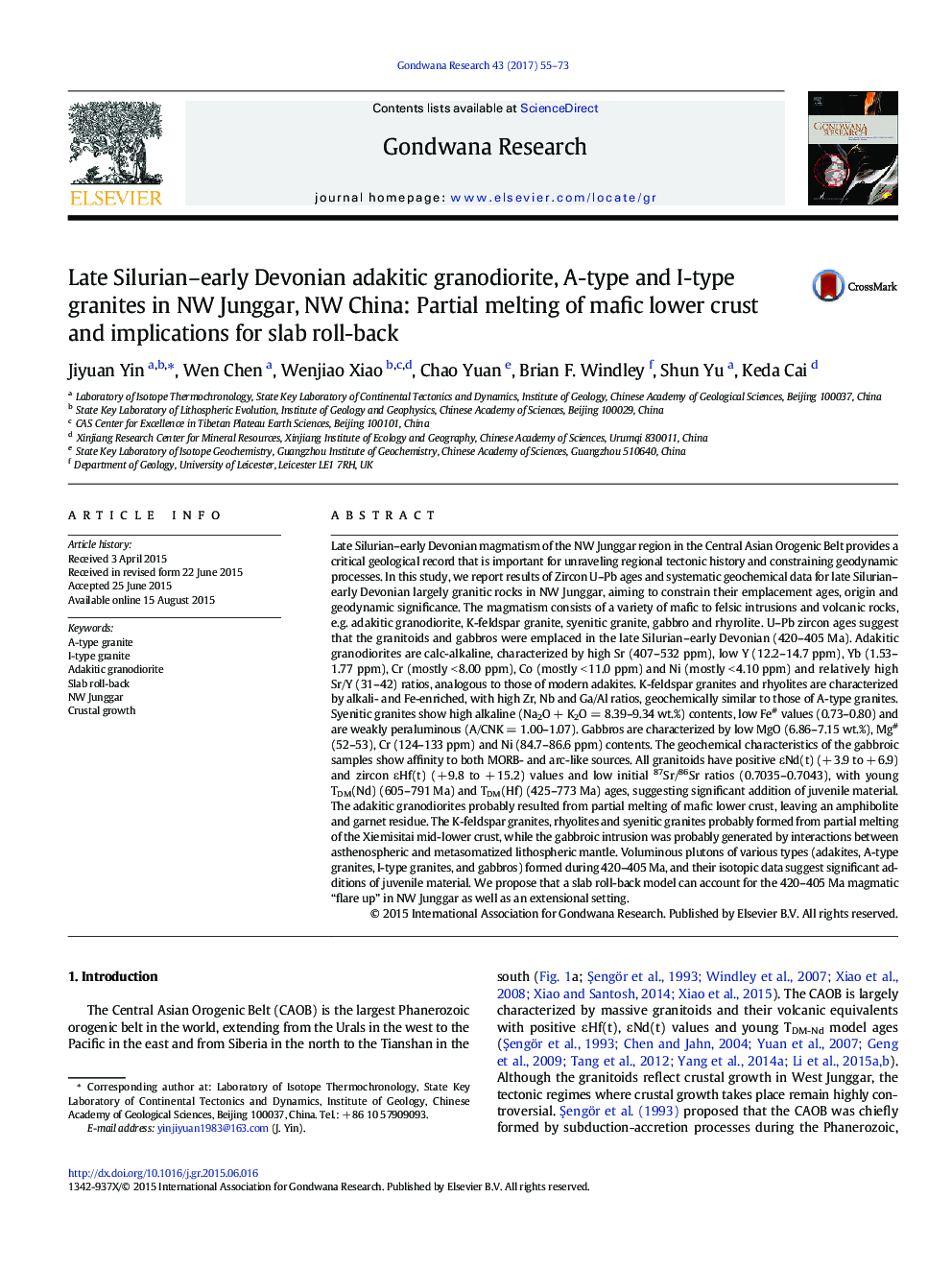| کد مقاله | کد نشریه | سال انتشار | مقاله انگلیسی | نسخه تمام متن |
|---|---|---|---|---|
| 5785350 | 1640128 | 2017 | 19 صفحه PDF | دانلود رایگان |

- The intrusions in NW Junggar were emplaced during 420-405Â Ma.
- The intrusions were likely formed by partial melting of mid-lower crust.
- A slab roll-back was probably existed in late Silurian-early Devonian in NW Junggar.
Late Silurian-early Devonian magmatism of the NW Junggar region in the Central Asian Orogenic Belt provides a critical geological record that is important for unraveling regional tectonic history and constraining geodynamic processes. In this study, we report results of Zircon U-Pb ages and systematic geochemical data for late Silurian-early Devonian largely granitic rocks in NW Junggar, aiming to constrain their emplacement ages, origin and geodynamic significance. The magmatism consists of a variety of mafic to felsic intrusions and volcanic rocks, e.g. adakitic granodiorite, K-feldspar granite, syenitic granite, gabbro and rhyrolite. U-Pb zircon ages suggest that the granitoids and gabbros were emplaced in the late Silurian-early Devonian (420-405 Ma). Adakitic granodiorites are calc-alkaline, characterized by high Sr (407-532 ppm), low Y (12.2-14.7 ppm), Yb (1.53-1.77 ppm), Cr (mostly < 8.00 ppm), Co (mostly < 11.0 ppm) and Ni (mostly < 4.10 ppm) and relatively high Sr/Y (31-42) ratios, analogous to those of modern adakites. K-feldspar granites and rhyolites are characterized by alkali- and Fe-enriched, with high Zr, Nb and Ga/Al ratios, geochemically similar to those of A-type granites. Syenitic granites show high alkaline (Na2O + K2O = 8.39-9.34 wt.%) contents, low Fe# values (0.73-0.80) and are weakly peraluminous (A/CNK = 1.00-1.07). Gabbros are characterized by low MgO (6.86-7.15 wt.%), Mg# (52-53), Cr (124-133 ppm) and Ni (84.7-86.6 ppm) contents. The geochemical characteristics of the gabbroic samples show affinity to both MORB- and arc-like sources. All granitoids have positive εNd(t) (+ 3.9 to + 6.9) and zircon εHf(t) (+ 9.8 to + 15.2) values and low initial 87Sr/86Sr ratios (0.7035-0.7043), with young TDM(Nd) (605-791 Ma) and TDM(Hf) (425-773 Ma) ages, suggesting significant addition of juvenile material. The adakitic granodiorites probably resulted from partial melting of mafic lower crust, leaving an amphibolite and garnet residue. The K-feldspar granites, rhyolites and syenitic granites probably formed from partial melting of the Xiemisitai mid-lower crust, while the gabbroic intrusion was probably generated by interactions between asthenospheric and metasomatized lithospheric mantle. Voluminous plutons of various types (adakites, A-type granites, I-type granites, and gabbros) formed during 420-405 Ma, and their isotopic data suggest significant additions of juvenile material. We propose that a slab roll-back model can account for the 420-405 Ma magmatic “flare up” in NW Junggar as well as an extensional setting.
173
Journal: Gondwana Research - Volume 43, March 2017, Pages 55-73